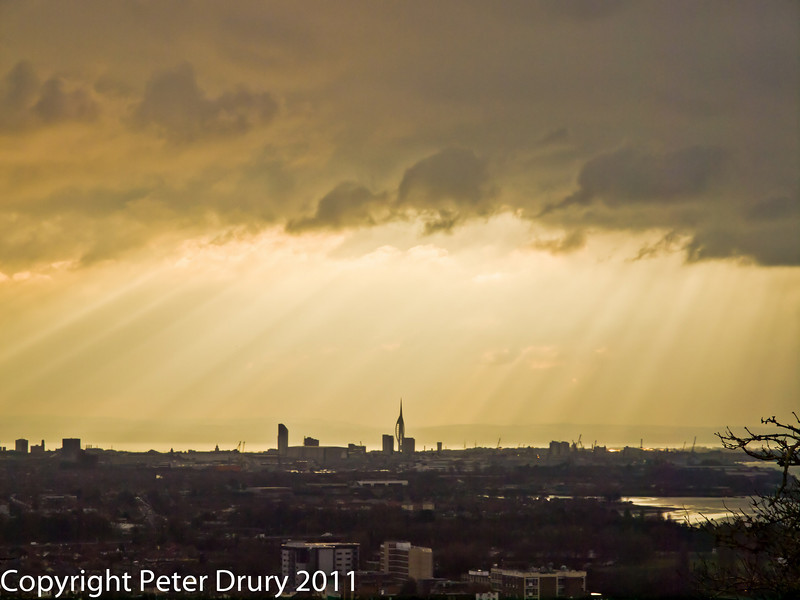Some has replied you about HDR which I assumed using PP to auto blend it and I don't think that is your prefered route. I'm also not a strong proponent of auto HDR as the end result is normally artificial and should I say "flat" though it started with many HDR. Quite irony. What the tutorial mentioned is manual blending (I think also called tone mapping if I'm not wrong) can be done with CS2, let alone CS4. I used this most of the time and by far the end result is most natural.
1) You have 2 images, one taken at +1 ev and the other at-1ev. So lets named it +1 ev and -1 ev. Stack +1ev on top of -1 ev and there will be 2 layers. It can be other way around, doesn't really matter.
2) After stacking, you will see the brighter image because +1ev is stack above -1ev.
3) Ensure black square is foregrd and white square is at backgrd by toggling it. These square are just below the magnifying glass (CS5 for my case).
4) Use a brush tool, set flow and opacity to 50% and brush over +1ev layer to expose the benealth layer which is - 1ev layer.
5) By selective brushing, you will able to retain the highlights and expose the low lights and you will have full control over the picture. Brush size and hardness to adjust accordingly.
Hope that helps
Thank you for the above:thumbsup:. What you describe is exactly what I want to do
I shall try this out and see where I get. First to get a suitable image........then. Watch this post




